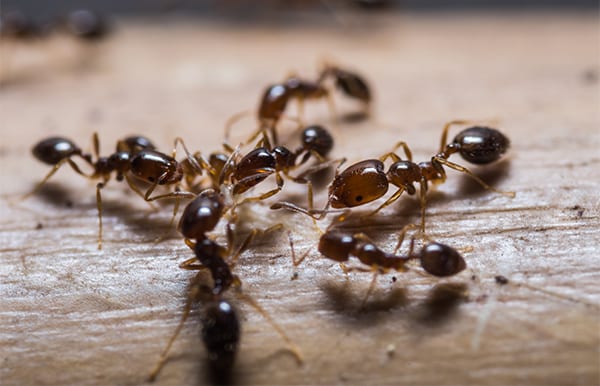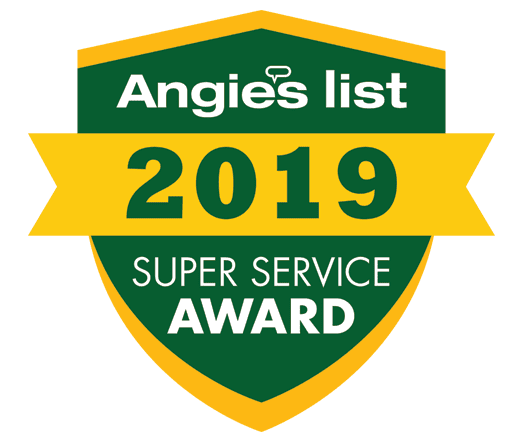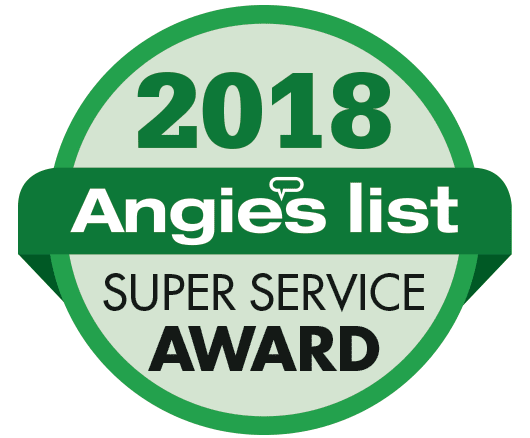
Pest
Moisture Ants
Pest Category
Nuisance Ant
Do They Carry Disease?
No
Do They Cause Structural Damage?
Yes
Cost of Damage

Other Damage?
Unlike Carpenter Ants, Moisture Ants actually digest cellulose (they eat wood). They prefer wood with a higher moisture content than normal. They will eat their through lumber and create a home for the colony. Because they eat wood and are not noticed outside foraging as much as other ant species, they can do significant amounts of damage without being detected for long periods of time.
Signs to Look For
Swarming is one of the most common signs of a Moisture Ant infestation. Usually in mid to late summer up until early fall Moisture Ant colonies will swarm. A homeowner will leave their home in the morning to go to work as usual, and come home to find a great number of winged ants in their home. Very alarming. This is because the colony swarmed. It is also possible to see this ant species foraging inside structures and outside. These ants are reddish to brown in color, typically 1/8″ inch in length and are monomorphic, meaning the workers are the same size. The female reproductives are much larger than the workers. Another way Moisture Ants can be noticed is to see what what is called “frass…wood that has been digested and excreted.” This frass can be noticed coming from window sills, baseboard trim at bottom of walls, sliding glass doors, tubs and showers, plumbing fixtures etc…anyplace where moisture has been collecting and causing damage. If frass is noticed anywhere in the structure it is critical to start investigating. The frass itself is ant fecal pellets. They are typically the same size, dark color and texture, unlike normal sawdust.
Where are they noticed?
Anytime winged ants are being noticed inside a structure at the times of the year mentioned previously, be alert. If small, reddish brown ants are being noticed anywhere in the structure or outside, be alert. If frass is coming from any portion of the structure call a professional right away. These ants can nest anywhere in a home where there is lumber and moisture.
If Untreated…
Depending on the amount of damage caused to the structure, costs could range into the thousands.
Habits
Nesting in damp lumber both in and outdoors. Creating galleries within infested lumber, excreting frass and swarming in late summer early fall.
More Information
Ant colonies are started from a single pregnant female (queen) and can grow up to several thousand individuals over time. Some ant colonies can persist for over 20 years. During the summer and fall, reproductive ants (males and queens) are produced by the colony. Moisture ants prefer to nest in water damaged, rotting wood. In nature, you can find colonies inhabiting fallen trees and tree stumps that are in the advanced stages of decay. Because moisture ants enjoy sweets, they can often come into our houses to feed on any sugar left unprotected; this can be annoying. And because they inhabit wood, they can cause accelerated decay in our homes. Colonies that develop in decaying wood of a house, like carpenter ants and termites, can weaken wooden structures. Since moisture ants prefer to nest in rotting wood, look for areas of your home that are susceptible to excess moisture. Check wood near gutters, leaky plumbing, windowsills and drains where wood can become damp. Also look for wood that comes into contact with soil, such as porch steps, support beams and low siding. Moisture ants are comprised of multiple species of yellow ants and cornfield ants. These ants, like all ants, are truly social insects that are altruistic; they sacrifice their own reproductive capabilities for the functioning of the colony. They have a cast system that works amazingly unified, just like bees and termites. Worker ants forage for sweet sugars and protein and are often found tending aphids for their honeydew. Workers bring back food for the developing larvae, other casts and the queen. Moisture ants are monomorphic meaning that all the casts look similar.
Tips
Do it yourself is not a recommended treatment measure without knowledge and experience in dealing with this ant species. We recommend you call a professional for identification and treatment.
You want a company to show up quickly, on time, and get rid of the pests that are bothering you. That is exactly what we specialize in. We are a family owned company with over 22 years experience that relies on service, not sales gimmicks.
Our philosophy is simple: We strive for excellence. Every employee in our company has this memorized, How we define excellence: “Giving the customer what they’re paying for, NO short cuts.” It is that simple. Our mission is to show up on time and get rid of the problem. No hassles. You can ask anyone in our company what our motto is and the answer will be the same.
No sales gimmicks or tricks. We’re consumers like everyone else, and don’t like someone trying to sell us something we don’t need, so we don’t do it here. We will tell you what you need, not what we want you to buy. That’s why we don’t make our customers sign contracts or remain obligated. You can use us for one service or many. We leave the decision up to you.
We are a service based business not a sales based business. Show up on time and do what you’re supposed to do. I am amazed at how many customers don’t expect this anymore from the companies they hire. When a company is providing an excellent service then referrals and increased sales are a natural result.
We've been the recipient of the Angi Super Service Award for 11 consecutive years






We Proudly Service these Cities and Surrounding Areas:
Edmonds, WA
Lynnwood, WA
Marysville, WA
Mukilteo, WA
Get a Free Estimate
Or Schedule Service
(877) 844-2847
Sign up to receive our latest offers
Give us your name and email and we’ll send you the latest news and offers from Classic Pest Control and Insulation.
